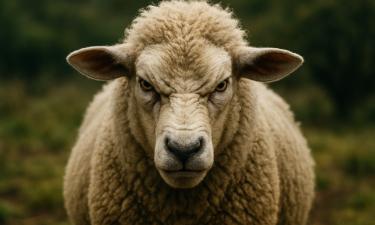Island of trash larger than Texas floats in the Pacific Ocean
An enormous island of trash twice the size of Texas is floating in the Pacific Ocean somewhere between San Francisco and Hawaii.

The California Coastal Commission in San Francisco said the so-called Great Pacific Garbage Patch, has been growing a brisk rate since the 1950s.
The enormous stew of trash - which consists of 80 percent plastics and weighs some 3.5 million tons, say oceanographers - floats where few people ever travel, in a no-man's land between San Francisco and Hawaii.
Marcus Eriksen, director of research and education at the Algalita Marine Research Foundation in Long Beach, said his group has been monitoring the Garbage Patch for 10 years.
"With the winds blowing in and the currents in the gyre going circular, it's the perfect environment for trapping," Eriksen said. "There's nothing we can do about it now, except do no more harm."
The patch has been growing, along with ocean debris worldwide, tenfold every decade since the 1950s, said Chris Parry, public education program manager with the California Coastal Commission in San Francisco.
Ocean current patterns may keep the flotsam stashed in a part of the world few will ever see, but the majority of its content is generated onshore, according to a report from Greenpeace last year titled "Plastic Debris in the World's Oceans."
The report found that 80 percent of the oceans' litter originated on land. While ships drop the occasional load of shoes or hockey gloves into the waters (sometimes on purpose and illegally), the vast majority of sea garbage begins its journey as onshore trash.
That's what makes a potentially toxic swamp like the Garbage Patch entirely preventable, Parry said.
"At this point, cleaning it up isn't an option," Parry said. "It's just going to get bigger as our reliance on plastics continues. ... The long-term solution is to stop producing as much plastic products at home and change our consumption habits."
Parry said using canvas bags to cart groceries instead of using plastic bags is a good first step; buying foods that aren't wrapped in plastics is another.
The Great Pacific Garbage Patch is particularly dangerous for birds and marine life, said Warner Chabot, vice president of the Ocean Conservancy, an environmental group.
Sea turtles mistake clear plastic bags for jellyfish. Birds swoop down and swallow indigestible shards of plastic. The petroleum-based plastics take decades to break down, and as long as they float on the ocean's surface, they can appear as feeding grounds.
"These animals die because the plastic eventually fills their stomachs," Chabot said. "It doesn't pass, and they literally starve to death."
The Greenpeace report found that at least 267 marine species had suffered from some kind of ingestion or entanglement with marine debris.
Source: The San Francisco Chronicle
Subscribe to Pravda.Ru Telegram channel, Facebook, RSS!


